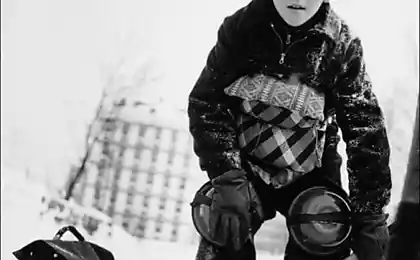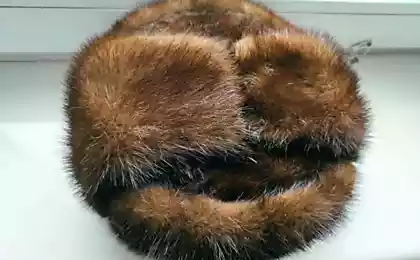1487
Facts about hats
Every day, wearing a warm hat before going out, we will reflect on what a long and interesting history, and it has passed many interesting facts hidden behind a simple knitting pattern or fur trim.

Hats from the hair
In Southern Sudan, wear hats made of natural hair. Nuer and Lang of Southern Sudan since ancient times and still make hats of his own hair. The height of such caps reaches half a meter, and the weight - a few kilograms.

"The fact hat»
In the old days messengers, deliver mail, sewed the lining caps or hats are very important papers, or "case" in order not to attract the attention of thieves. Hence the expression "in the bag».
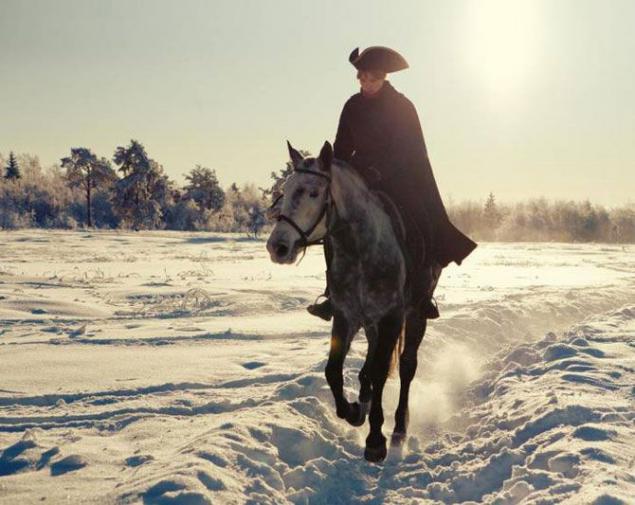
Cap with a beard
Canadian snowboarder Jeff Phillips knows what a cold, what is the sharp wind and snow in the face. To protect against such weather have long used specific headgear, the so-called full face mask. But you want not only to be protected, but also the pleasure of decoration. Perhaps it is the desire and Jeff inspired the creation of new design knitted winter hat.
The design is simple - to a conventional cap is attached to the lower part of the Velcro-beard. Thus, a protection for the face, which does not prevent cross points. And the most important thing in a hat can look stylish and fun.

Boyar cap
Russian boyars' hats were also a part of the interior. Boyar hats made of fur fox or marten. In fact, shoot them in the room was not accepted, but sometimes it has happened at home. Then, we put the cap on a special disc, painted as a portrait of the house owner and the owner of the hat. Thus, the cap became a prestigious element of the interior.

Cap-balaclava
During the Crimean War in the fighting near the town of Balaklava, British troops clashed with unaccustomed extreme cold. To solve this problem, for the soldiers were made knitted hats with slits for the eyes and mouth. Subsequently, these caps and called balaclava balaclava or in English.

The biggest knitted cap in Russia
Russian record was set in the regional center January 12 in Tambov. Rasskazovsky umelitsy Michurinist together with the plant "Progress" created a huge knitted cap. As a result, 5888 proved to be an Olympic cap centimeters in height and a diameter of 2014 centimeters. However, this number does not happen by accident. Huge headgear specifically decided to do so in honor of the Olympic Games in Sochi in 2014.

History pompom
The pompons on the cap was invented to protect the head of the French sailors. Earlier in the ship's rooms have low ceilings, and indeed it was a bit crowded. A pom-pom hat on his head protected the sailor from accidentally hitting his head on the ceiling.

Soviet fashion
In Soviet fashion for hats his word said Leonid Brezhnev: in the 60-70-ies of the last century, members of the Politburo were identical reindeer-fawn hat. Later, there were hats of the muskrat fur and Tuleneva. Brezhnev also introduced the fashion for mink fur cap, which became an attribute of consistency in a period of profound stagnation.

About fur cap
Fur cap came from the Mongolian Malachi. Mongolian hat was a cap in the form of a cone cut sheepskin. This man's hat was indispensable in winter: its wide lapels protect face and cheeks soldiers Tatar-Mongol hordes from the wind and blowing snow.
Later sheepskin cuffs Malachai began to cut vertically on the sides, the resulting "ears" can be tied at the back of the head warming weather rider. From such Malachai and there were the legendary men's fur cap, which became popular in Russia in XVI-XVII centuries, and were called "Treukhov».
It is noteworthy that now the hat with earflaps - a symbol of men's hats for the winter, but at first they sported mostly wealthy Russian women who Treukhov decorated with rich fabrics and stones.

The origin of the word "cap»
The word "cap" came into Russian from the French by a German or Polish. Later, the opposite has happened borrowing, and now in addition to the French word «chapeau» within the meaning of any headgear has a trace «chapka», referring only to the fur cap with ear flaps Russian sample.

The biggest knitted hat in Ukraine
In the largest knitted hat in Ukraine at the same time we were able to warm up to 25 people. In the cold winter season in the center of Kiev on Khreshchatyk placed a cap diameter of 4 to 5 meters. Experts of the National Registry of Records confirmed that today - it's the biggest knitted hat in Ukraine.

Nodding frenzy
Hatter from "Alice in Wonderland" was mad because of the mercury. The fact that in times of Carroll in the manufacture of felt hats used mercury from the toxic fumes which have engaged in this craft experienced tremors, irritability, upset the coordination of movements, and often hallucinations.
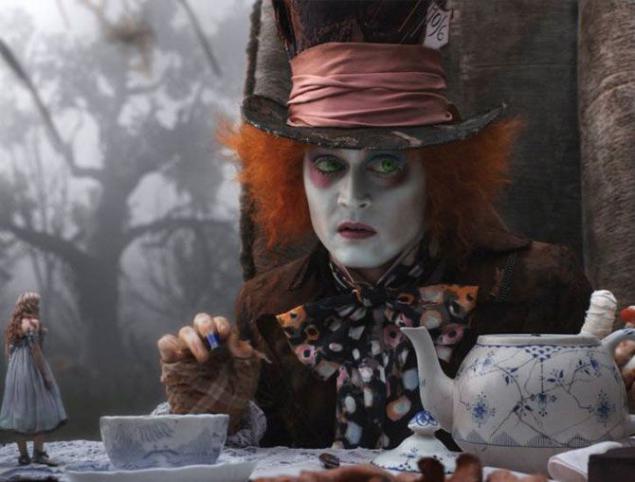
The popularity of men's hats
Men's knitted hats popular ushanok. Judging by the number of queries in Yandex, men's knitted hats are interested in about 2 times more likely than a fur cap.

Caps in antiquity
The first mention of physically tangible hats go from time immemorial. The first hat is painted on a granite slab in Thebes. A young man in a straw hat. The ancient Greeks treated differently caps. Basically, we put them on a journey.
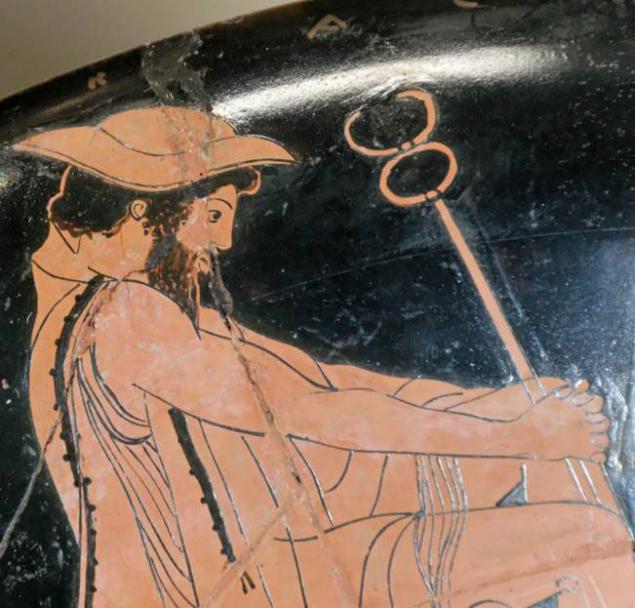
The amount of material
To tie Men's hats average size, you need about 100 g of yarn.

Source: algre.livejournal.com

Hats from the hair
In Southern Sudan, wear hats made of natural hair. Nuer and Lang of Southern Sudan since ancient times and still make hats of his own hair. The height of such caps reaches half a meter, and the weight - a few kilograms.

"The fact hat»
In the old days messengers, deliver mail, sewed the lining caps or hats are very important papers, or "case" in order not to attract the attention of thieves. Hence the expression "in the bag».

Cap with a beard
Canadian snowboarder Jeff Phillips knows what a cold, what is the sharp wind and snow in the face. To protect against such weather have long used specific headgear, the so-called full face mask. But you want not only to be protected, but also the pleasure of decoration. Perhaps it is the desire and Jeff inspired the creation of new design knitted winter hat.
The design is simple - to a conventional cap is attached to the lower part of the Velcro-beard. Thus, a protection for the face, which does not prevent cross points. And the most important thing in a hat can look stylish and fun.

Boyar cap
Russian boyars' hats were also a part of the interior. Boyar hats made of fur fox or marten. In fact, shoot them in the room was not accepted, but sometimes it has happened at home. Then, we put the cap on a special disc, painted as a portrait of the house owner and the owner of the hat. Thus, the cap became a prestigious element of the interior.

Cap-balaclava
During the Crimean War in the fighting near the town of Balaklava, British troops clashed with unaccustomed extreme cold. To solve this problem, for the soldiers were made knitted hats with slits for the eyes and mouth. Subsequently, these caps and called balaclava balaclava or in English.

The biggest knitted cap in Russia
Russian record was set in the regional center January 12 in Tambov. Rasskazovsky umelitsy Michurinist together with the plant "Progress" created a huge knitted cap. As a result, 5888 proved to be an Olympic cap centimeters in height and a diameter of 2014 centimeters. However, this number does not happen by accident. Huge headgear specifically decided to do so in honor of the Olympic Games in Sochi in 2014.

History pompom
The pompons on the cap was invented to protect the head of the French sailors. Earlier in the ship's rooms have low ceilings, and indeed it was a bit crowded. A pom-pom hat on his head protected the sailor from accidentally hitting his head on the ceiling.

Soviet fashion
In Soviet fashion for hats his word said Leonid Brezhnev: in the 60-70-ies of the last century, members of the Politburo were identical reindeer-fawn hat. Later, there were hats of the muskrat fur and Tuleneva. Brezhnev also introduced the fashion for mink fur cap, which became an attribute of consistency in a period of profound stagnation.

About fur cap
Fur cap came from the Mongolian Malachi. Mongolian hat was a cap in the form of a cone cut sheepskin. This man's hat was indispensable in winter: its wide lapels protect face and cheeks soldiers Tatar-Mongol hordes from the wind and blowing snow.
Later sheepskin cuffs Malachai began to cut vertically on the sides, the resulting "ears" can be tied at the back of the head warming weather rider. From such Malachai and there were the legendary men's fur cap, which became popular in Russia in XVI-XVII centuries, and were called "Treukhov».
It is noteworthy that now the hat with earflaps - a symbol of men's hats for the winter, but at first they sported mostly wealthy Russian women who Treukhov decorated with rich fabrics and stones.

The origin of the word "cap»
The word "cap" came into Russian from the French by a German or Polish. Later, the opposite has happened borrowing, and now in addition to the French word «chapeau» within the meaning of any headgear has a trace «chapka», referring only to the fur cap with ear flaps Russian sample.

The biggest knitted hat in Ukraine
In the largest knitted hat in Ukraine at the same time we were able to warm up to 25 people. In the cold winter season in the center of Kiev on Khreshchatyk placed a cap diameter of 4 to 5 meters. Experts of the National Registry of Records confirmed that today - it's the biggest knitted hat in Ukraine.

Nodding frenzy
Hatter from "Alice in Wonderland" was mad because of the mercury. The fact that in times of Carroll in the manufacture of felt hats used mercury from the toxic fumes which have engaged in this craft experienced tremors, irritability, upset the coordination of movements, and often hallucinations.

The popularity of men's hats
Men's knitted hats popular ushanok. Judging by the number of queries in Yandex, men's knitted hats are interested in about 2 times more likely than a fur cap.

Caps in antiquity
The first mention of physically tangible hats go from time immemorial. The first hat is painted on a granite slab in Thebes. A young man in a straw hat. The ancient Greeks treated differently caps. Basically, we put them on a journey.

The amount of material
To tie Men's hats average size, you need about 100 g of yarn.

Source: algre.livejournal.com




